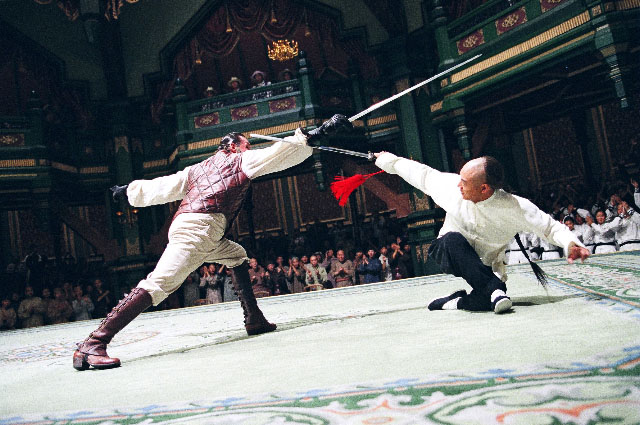
I’ve been writing a lot about Striking from the point of view of application as an animator. But I want to back up in the process a little and examine the choices available before you get into performing that fight in animation or on camera.
Culturally Driven
When you’re deciding how a character should move in a fight, one approach is to think about where that character is from. If your character lives in Southern China from the 18th Century onward, it might make sense for him to be a Wing Chun fighter. On the other hand, if your character is an Aztec warrior fighting the arrival of Cortez, then not so much.
Where does the character come from doesn’t just mean geography. The recent series of Jason Bourne movies chose Filipino Kali and Jeet Kune Do for the hero’s fighting style. Jason Bourne wasn’t Filipino but he came from the military and intelligence community where those systems are widely employed.
Imagine if they had gone another direction. Imagine they cast Jean Claude Van Damme as Jason Bourne (and imagine he could act). Instead of the brutal efficiency of Kali, Bourne would have been dispatching attackers with spinning kicks (and by doing the splits at inappropriate times). JCVD would do all that stuff very well and make it look good, and Shotokan is a beautiful system, but it totally wouldn’t fit the character or the gritty realism Directors Doug Liman and Paul Greengrass were going for.
Character Driven
If you’re doing a science fiction or fantasy project, or anything else without historical or cultural constraints, you can approach this like any other visual development project. Just like when you’re designing a character you may emphasize different types of shapes (round or square, pointed or curved, etc), when you’re designing that character’s fighting style (or any movement really) you can create similar emphases.
In Iron Man 2 (2010), Black Widow (Scarlett Johansson) and Happy Hogan (Jon Favreau) simultaneously fight a bunch of bad guys. Happy Hogan goes head up with one similarly shaped bad guy. For the most part, the two of them just stand in front of each other and trade punches. In contrast, being smaller and slighter, Black Widow doesn’t want to go toe-to-toe with bigger opponents so her movements emphasize more circular shapes and moving around her opponents. These circular shapes culminate with a couple of dramatic takedowns from Lucha Libre, Mexican professional wrestling.
Or you can make choices simply to show differences between characters. In The Phantom Menace (1999), the duel between Darth Maul (Ray Park) and the two heroes, Obi Wan Kenobi (Ewan McGregor) and Qui Gon Jinn (Liam Neeson), is a stylistic matchup between Northern Shaolin Kung Fu (Darth Maul), and Japanese Iaido and Kendo (the two Jedi). The Shaolin style gives Darth Maul a wilder, more flowing, circular style and the Japanese fencing of the Jedi emphasizes control and more linear striking.
Why Does it Matter?
Will anybody besides martial arts nerds notice any of this? Probably not. But they’ll feel it. This guy looks really aggressive. That guy is a show off. That other guy is very elegant. Most people won’t know or care what system they’re using but it needs to look right for the situation and the character.